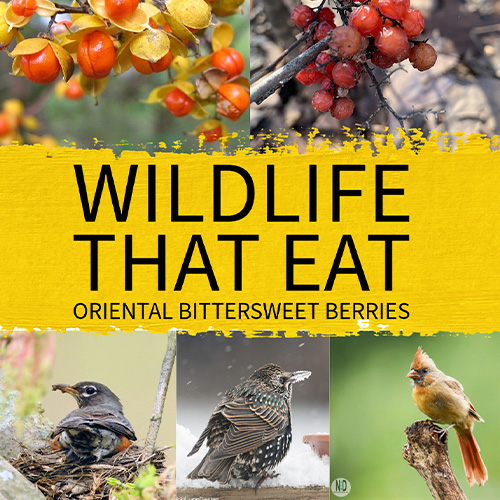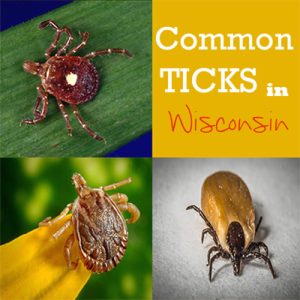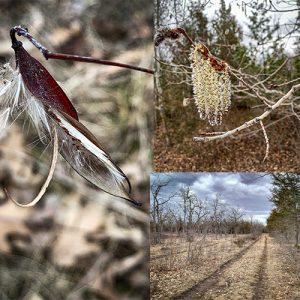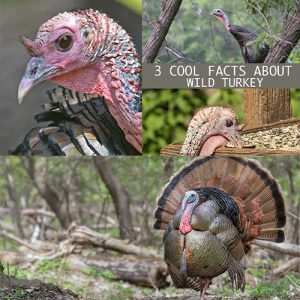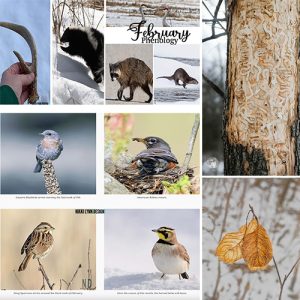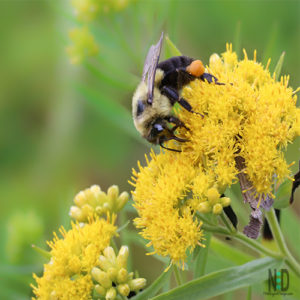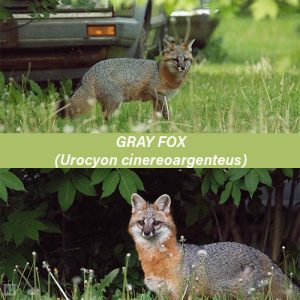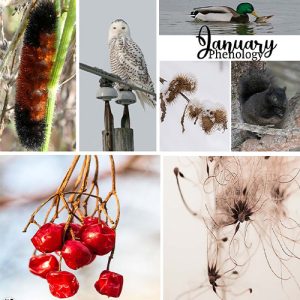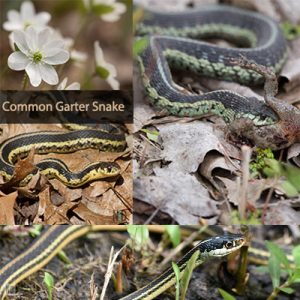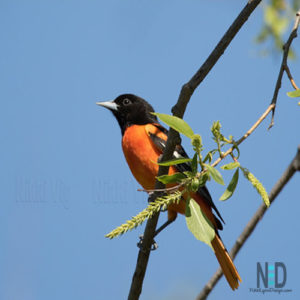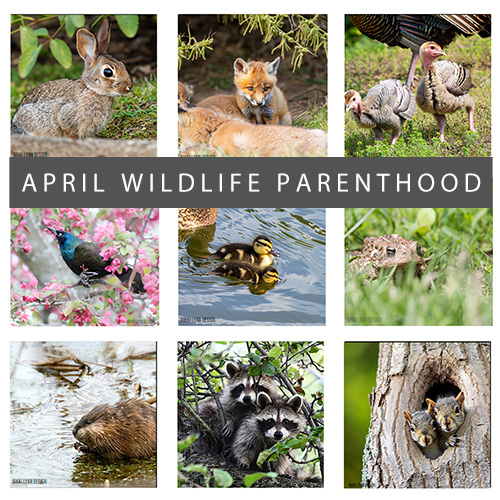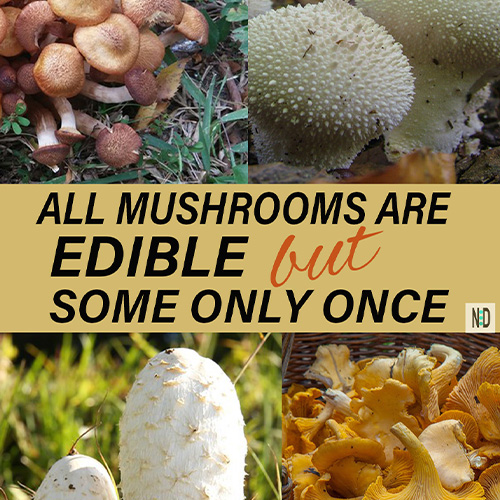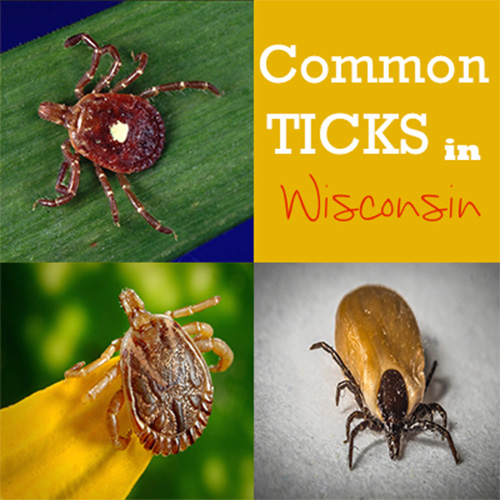We are halfway through the shortest month on the calendar and February Is the border between winter and spring. At this point, we know that wildflowers and fellow winged ones will be arriving shortly.
Eastern Pheobe
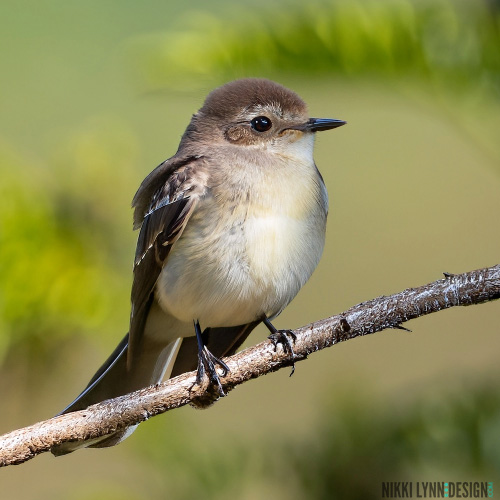
We have plenty of wildlife coming and going this month. The Eastern Pheobes have returned, I hear them off in the distance in the woodland areas surrounding BBWS.
The Canada geese and sandhill cranes are flying back in large groups overhead.
The Lapland Longspurs and snow bunting are still around and haven’t left us yet. You can see them flocked in the outer edges of the farm fields.
Eastern Pheobe sound file: Jonathon Jongsma, license Creative Commons Attribution-ShareAlike 3.0
Wildlife On The Move

The wild turkeys are busy hiding and foraging in and out of the brush, sparrows are collecting everywhere in large groups and a variety of birds are feeding at Nyjer thistle seed socks at our home.
Our male mallard ducks (drakes) are sporting vibrant green heads and doing their fabulous head bobbling at females.
It appears as if all the wildlife are waking up and are on the move.
.
If you would like a more complete list of wildlife that are returning, leaving, and mating for February, I put together a more comprehensive listing for you to browse.
Video From Area Walk
@nikkilynn54311 Open rivers and streams and Im seeing green! Spring is just around the corner even of Mother Nature gives us a few more signs it is still winter.
♬ original sound – Nikki
The rivers, creeks, and streams are open with water flowing, which was a beautiful site to see. Along the Fox River, small fishing boats have been seen in the open water.
Oriental Bittersweet Berries (Celastrus orbiculatus)
A few oriental bittersweet berries are hanging on from the fall in the woodland areas. Over the winter I’ve taken walks through our neighborhood and saw a few outdoor planters using this branched berry in their holiday outdoor arrangements and wanted to educate people on the importance of not using it. Oriental bittersweet is a restricted species under Wisconsin’s Invasive Species Rule NR40. This makes it illegal to transport, transfer, or introduce Oriental bittersweet statewide in Wisconsin.
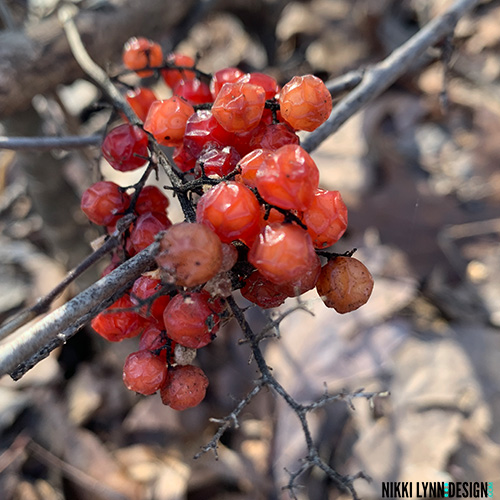
Oriental Bittersweet (Celastrus orbiculatus) is a woody vine native to East Asia, particularly China, Korea, and Japan. It is widely known for its attractive red berries and yellow outer shells, which make it a popular ornamental plant.
However, Oriental Bittersweet has become a problematic invasive species in many parts of North America and Europe.
Attractive Yet Invasive Vine
Oriental Bittersweet is an attractive yet invasive vine that poses significant ecological threats in regions where it has become established. The vine’s ability to climb and girdle trees can weaken and eventually kill them. Its ability to spread rapidly, outcompete native vegetation and attract birds for seed dispersal make it a challenging species to manage and control in affected ecosystems.
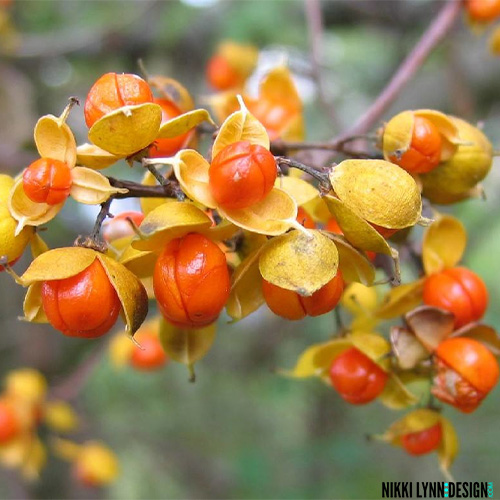
The vine thrives in a variety of habitats including woodlands, fields, roadsides, and disturbed areas.
Birds are attracted to Oriental Bittersweet primarily for its berries, which provide a food source, especially during the winter months when other food may be scarce.
“Birds feasting on berries: nature’s colorful banquet, a symphony of flavors shared among the branches.”
Animals That Like Oriental Bittersweet Berries
Bird species such as American Robins, Cedar Waxwings, Northern Cardinals, European Starlings deer red squirrels, gray squirrels, and wild turkeys are known to consume the berries and aid in seed dispersal.
While birds and wildlife benefit from the food source, their consumption of the berries also contributes to the spread and invasiveness of Oriental Bittersweet in new areas. It is suggested to burn the berries and vines to control the spread.
Animals That Like Oriental Bittersweet Berries
American Robin
European Starling

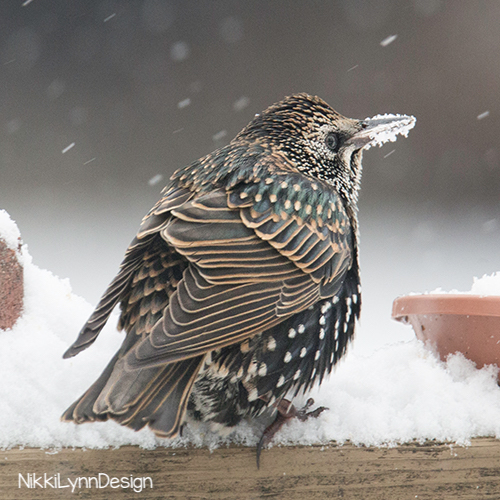
Female Cardinal
Male Cardinal
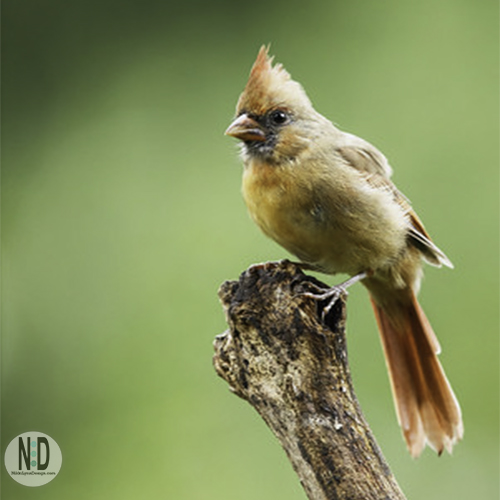
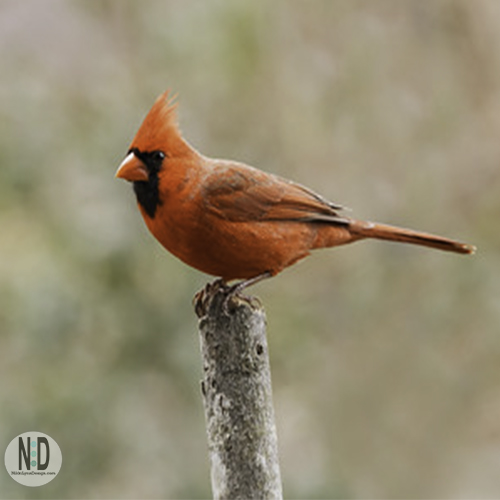
Gray & Red Squirrels
White-tail Deer
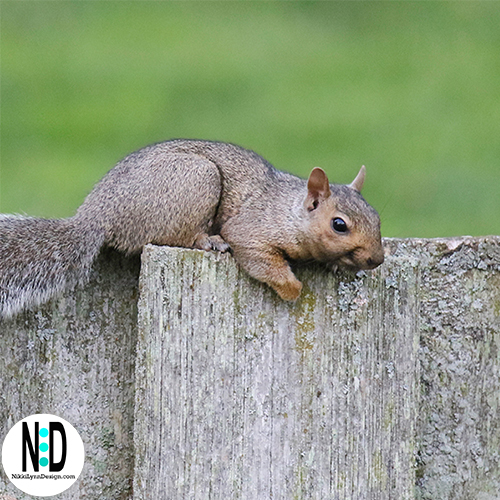

Pin Me For Later
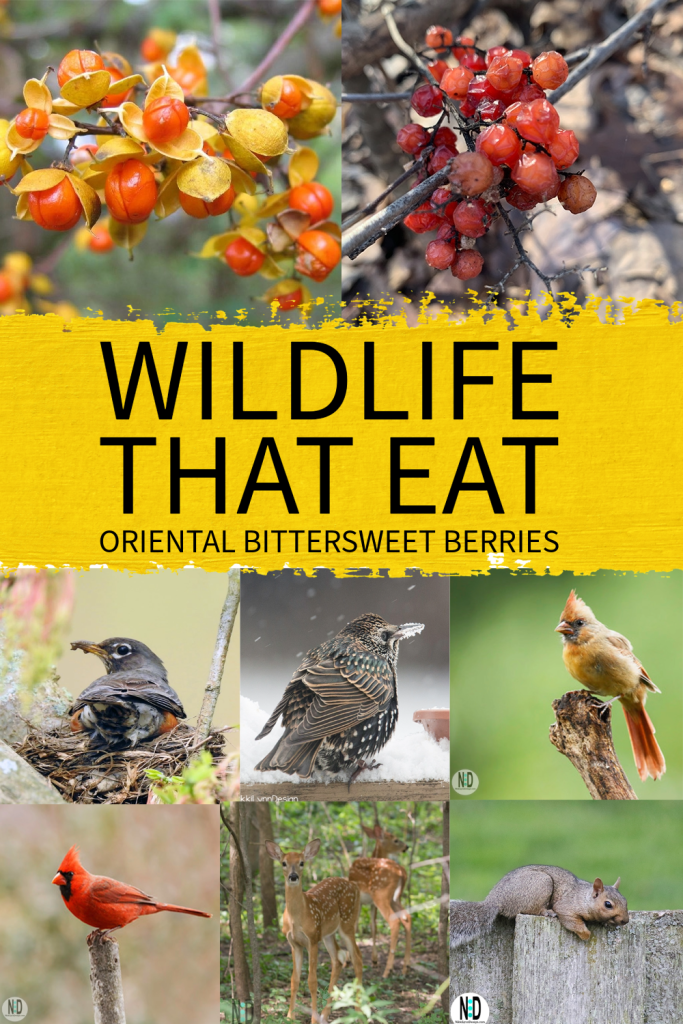
I’m Seeing Green
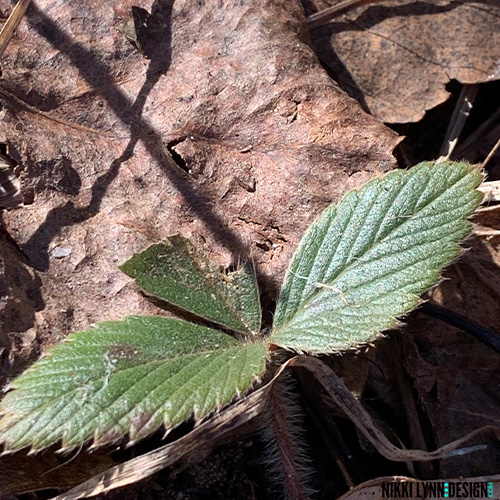
Wild Strawberry
Despite seeing some fabulous frosty-fingered ice earlier this month, I am oddly seeing plenty of green growth peeking out from under the dead leaf piles and a lot of brown mushrooms popping up in places already.
Wild strawberry plants are still growing strong? Why, yes they are. Under all the leaf litter there are so many wild strawberry plants thriving. Which I find odd and rather cool all at the same time.
“As the frost thaws and the sun’s warmth kisses the earth, plants awaken from their winter slumber, unfolding their petals to greet the vibrant tapestry of spring.”
Sharplobe Hepatica Liverwort
(Hepatica nobilis var. acuta)
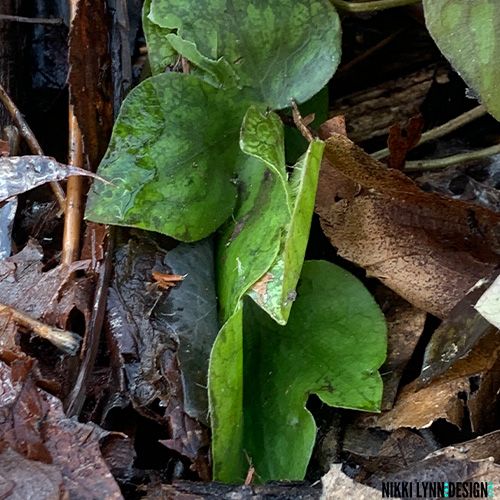
Sharplobe Hepatica Liverwort (Hepatica nobilis var. acuta) is also alive, healthy, and resting comfortably under the leaf litter.
You can expect on a normal given year for the star-shaped flowers of this plant to bloom just before the trees leaf out from the second week in April continuing until mid-May.
Brown Mushrooms
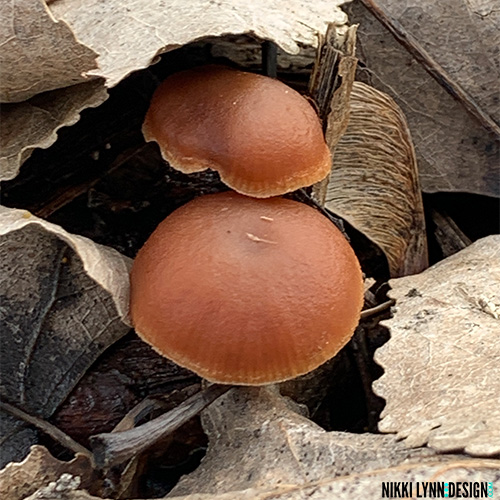
Brown mushrooms, which are one of many decomposers on the woodland floor are starting to pop up everywhere. A decomposer’s job is to break down wood and leaves as well as any other organic materials and recycle the nutrients back into the soil. They are a very important part of the Earth’s ecosystem.
Walk Along Hussong Trail
Enjoy a video compilation of scenery from along the Hussong Trail inside of BBWS in Green Bay, Wisconsin from the past two weeks.
@nikkilynn54311 Hussong Trail
♬ original sound – Nikki
February Is the border between winter and spring. Although, I know Mother Nature has a few additional storms to throw our way, I’m still excited and actively waiting to see additional feathered friends returning for another year, animals waking up from winter naps, and new plant growth in the coming weeks.
Additional Projects I’m Working On
Until spring officially arrives, I’m keeping myself busy with projects, like making elderberry syrup, and elderberry ink, and using dried flowers and recycled paper to create journal paper. I’m also, navigating a new household dietary change of wheat-free / gluten-free / dairy-free and low histamine foods as tolerated which I have named the WFCS diet – white bread, fresh chicken breast, and salmon diet! Hoping that dietary change is just another season in our lives and it goes away as quickly and mysteriously as it came. Life has been both interesting and challenging around here, that is for sure!
Here is hoping that you can get out and enjoy the last few weeks of February – Until next month friends, I wish you peace, health, and happiness!
The post was last updated in February 2024.
This site contains affiliate links that may provide a small compensation to me —-> at no additional cost to you.
